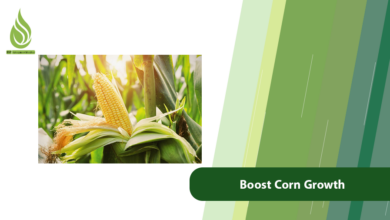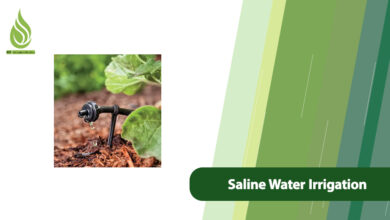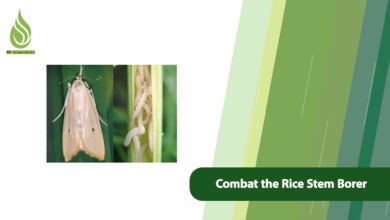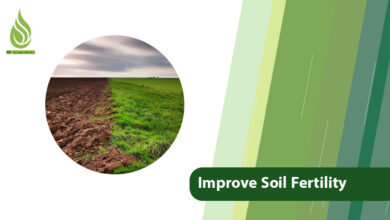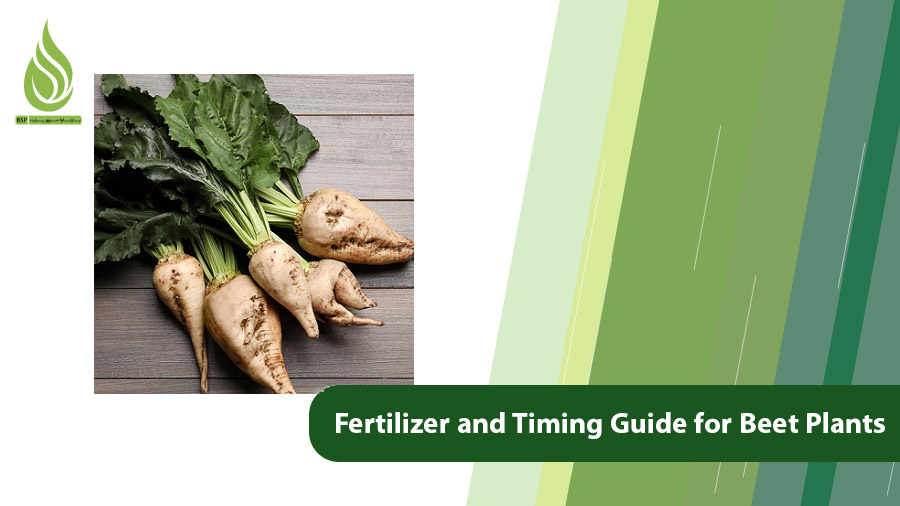
The Best Fertilizer and Timing Guide for Beet Plants
To successfully harvest high-quality, marketable beets, it’s essential to provide the necessary nutrients at various stages: before planting, during planting, and throughout the growth cycle. To enhance crop yield and improve the quality of your beets, using a specialized beet fertilizer is highly beneficial. In this article, we’ll explore the best fertilizers for beets and share effective fertilization techniques.
The Importance of Fertilizing Beets
Beets are rooted at a depth of less than 12 inches. The leaves above ground harness sunlight to produce sucrose, which is then transferred to the roots during the night. Cultivating beets is vital globally, with their primary application being in the industry.
In Iran, the beet planting season begins in March, with harvest occurring from early October to late December. In some regions, however, beets are planted in the fall, with harvest times ranging from May to June. For instance, in areas like Khuzestan, farmers cultivate beets in the autumn.
Every farmer aims to harvest large, healthy, and marketable beets. Achieving this requires not just optimal growth conditions but also proper fertilization. As soil fertility diminishes over time due to continuous cropping, it becomes crucial for farmers to replenish essential nutrients through fertilization. Today, farmers growing beets and other crops need a tailored fertilization strategy. Implementing a well-planned fertilization program can significantly boost both yield and quality.

What is the Best Fertilizer for Beet?
Nitrogen Fertilizer: The Best Fertilizer for Beet
Nitrogen is a key nutrient for the growth of beets. It promotes rapid plant growth, energy supply, chlorophyll production, and protein synthesis, and increases overall plant metabolism. Adequate nitrogen results in lush foliage and robust buds, while a deficiency leads to yellowing leaves and stunted growth.
Proper fertilization is crucial; while nitrogen is vital, overuse can harm plant health. Insufficient nitrogen can severely reduce root function, whereas excessive nitrogen can compromise beet quality. The specific nitrogen needs of your soil can be determined through soil testing. Ammonium sulfate is one of the best nitrogen sources for beets, also providing a beneficial amount of sulfur. If you’re unfamiliar with the significance of sulfur, we recommend learning more about it through additional resources.
beets require nitrogen during the 4 to 6-leaf stage, which can be effectively supplied using crystalline ammonium sulfate. This fertilizer is generally applied during the leaf development phase of beet and before the tuber begins to bulk up. Once the tuber starts growing, nitrogen application should be reduced, and fertilizers suited for tuber development should be utilized.
Phosphorus:
Phosphorus is crucial for the health and productivity of beets. It helps adjust soil pH in areas with high alkalinity, making other nutrients more accessible to the plant. Phosphorus supports root growth, accumulation in roots, and overall plant health. A deficiency often results in dark green or purple coloration in the leaves.
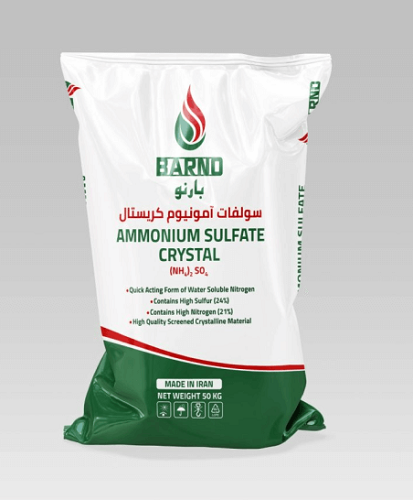
Potassium Fertilizer:
Potassium is another essential element for beet growth. It facilitates the transfer of sugars to the roots and increases starch content. Without adequate potassium, sucrose transfer from the leaves to the roots becomes challenging. Potassium also enhances the size of the beet tuber and improves the plant’s resistance to bacterial and fungal diseases, as well as environmental stresses like extreme temperatures.
The best time to apply potassium fertilizer is before planting and during land preparation. However, some farmers may choose to apply it post-planting, during the root development stage. The specific potassium needs will depend on the plant’s requirements and soil nutrient conditions. Signs of potassium deficiency include wilting leaves and poor tuber growth, which can be confirmed through soil testing.
Organic Fertilizers:
Incorporating organic fertilizers, particularly animal manure, can significantly improve both the quantity and quality of beet yields. These fertilizers enhance flowering, fruiting, and foliage growth, and increase the plant’s resilience to environmental conditions while promoting seed germination.
Organic fertilization is typically carried out in winter before planting beet seeds. Depending on soil needs and geographical considerations, adding natural fertilizers can prepare the soil for successful seed growth. Organic fertilizers release nutrients slowly, providing a sustainable nutrient source for your crops.
Micronutrients:
A deficiency in micronutrients such as iron, zinc, boron, and manganese can significantly reduce beet yields. If your soil lacks these essential elements, it’s crucial to replenish them through fertilization. Soil tests can help identify deficiencies in these micronutrients.
As we’ve discussed, this section outlines the necessary fertilizers for optimal beet growth. However, the exact amounts and timing of fertilizer application depend on your specific soil conditions. Understanding your soil’s requirements is key, and a soil test will provide valuable insights into the nutrients your soil needs.
During soil testing, samples from different areas of your field are analyzed in a laboratory to pinpoint any deficiencies. Following this analysis, you can create a regular fertilization schedule based on the specific needs of your soil.
If you’re inexperienced with beet fertilization, it’s advisable to consult an agricultural expert or a seasoned farmer for guidance.
How to Apply Fertilizer to Beet?
Applying fertilizer to beet occurs in several stages, which we will outline below.
- Land Preparation Before Planting: Fertilization at this stage is typically achieved through the soil method. This involves applying fertilizer during the plowing process, allowing it to penetrate deep into the ground. Organic fertilizers, as well as nitrogen and phosphorus, are commonly incorporated into the soil before planting.
- Stages of Growth (4 to 18 Leaves): Beet growth is divided into distinct stages, including 4-6 leaves, 6-10 leaves, 10-16 leaves, and 16-18 leaves. Fertilization during these stages is accomplished through irrigation and foliar spraying. Key nutrients such as potassium, nitrogen, phosphorus, sulfur, calcium, and various micronutrients are delivered to the soil via these methods.
In the irrigation method, fertilizers are absorbed directly by the beetroots through the irrigation system. Typically, fertilizer is applied during the last thirty minutes of watering, ensuring an even distribution of nutrients throughout the soil.
In the foliar spraying method, mix the fertilizer with an appropriate amount of water and apply it using a sprayer. This method enhances fertilizer efficiency, and plants tend to respond more rapidly. For optimal results, foliar spraying should be done during times when there is no direct sunlight; early morning or evening hours are ideal.
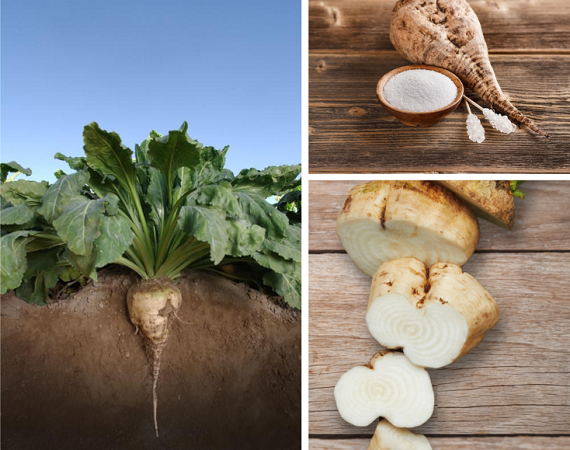
Additional Tips for Beet Growth and Productivity
Applying fertilizer alone isn’t enough to ensure healthy growth and high productivity of beet plants. To maximize efficiency, several conditions need to be met.
- Suitable Soil: The land designated for beet planting should have optimal conditions. It should be well-drained and allow for the passage of water and air. While fertilization can address nutritional needs, the soil should also be free of excessive salts. Over-fertilization can be detrimental, not only to plants but also to the environment and human health.
- Optimal pH Levels: Beets thrive in soil with a pH range of about 6.0 to 8.5. Maintaining this pH range is essential for a successful harvest. If the pH falls outside this range, it’s necessary to adjust the soil’s alkalinity or acidity using appropriate methods. For instance, in alkaline or saline soils, using sulfur fertilizers like ammonium sulfate is recommended.
- Selecting the Right Variety: Certain beet varieties are better suited for specific regions, particularly those that demonstrate greater resistance to weather extremes and pests. Choosing a cultivar that performs well in your area is advisable.
- Timing of Planting Seeds: The timing for planting beet seeds should be based on the local climate and geographical conditions. Seeking advice from experienced farmers in your region or agricultural experts can help determine the best planting time.
- Attention to Land Preparation Steps: Preparing agricultural land before planting is critical for high crop productivity. This includes using herbicides, plowing the land, applying animal and organic fertilizers, and leveling the soil.
- Weed, Pest, and Disease Control: Weeds can deplete essential nutrients from the soil, making them less available to beet plants. The presence of weeds and pests can significantly lower the quality of sugar beets. It’s crucial to implement effective solutions to manage weeds and pests.
- Irrigation Management: Beets require ample moisture during the seed planting phase, bud growth, and up to the four-leaf stage. After sprouting and reaching the four-leaf stage, the frequency and amount of irrigation should be adjusted based on local weather conditions.
- Planting Depth and Spacing: When planting beets, seeds should be placed 1.5 to 2 inches deep in light soil, and 1 to 1.5 inches deep in heavier soil. For row cultivation, maintain a seed spacing of 6 to 8 inches with 24 to 26 inches between rows.
- Ideal Conditions for Beet Cultivation: The best temperature range for beet growth is between 68°F and 75°F. Adequate sunlight is crucial for beet development, as it aids in sugar accumulation in the roots. The ideal soil texture for growing beets is loamy soil with a mix of clay and sand. Stony or obstructed soils are not suitable for beet cultivation.
